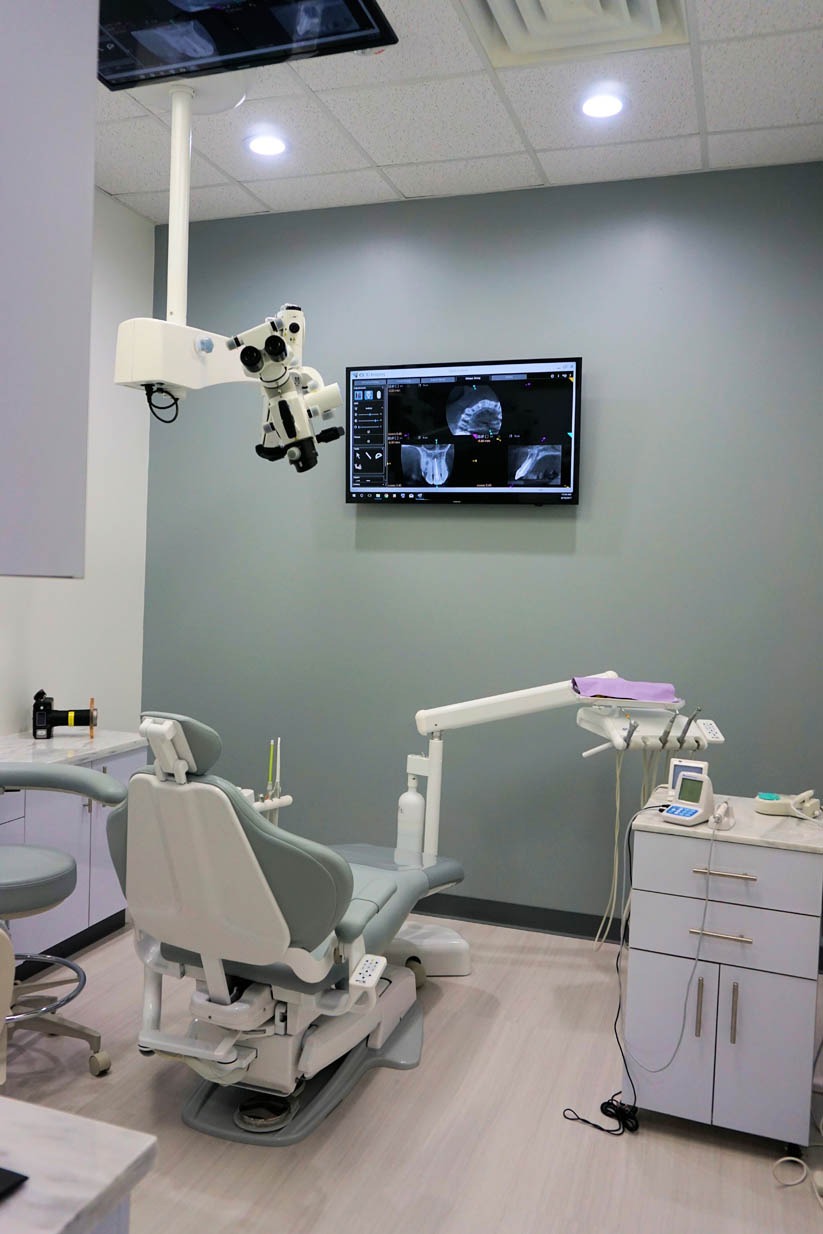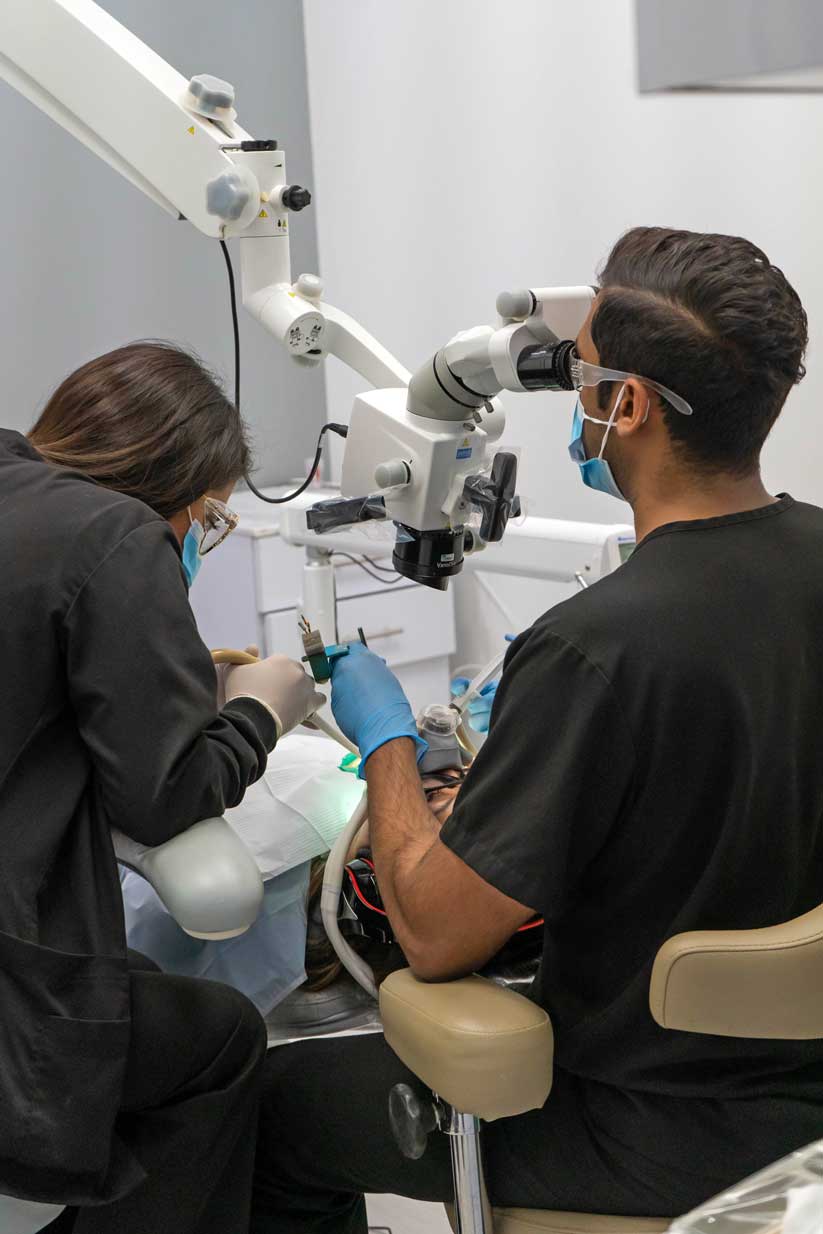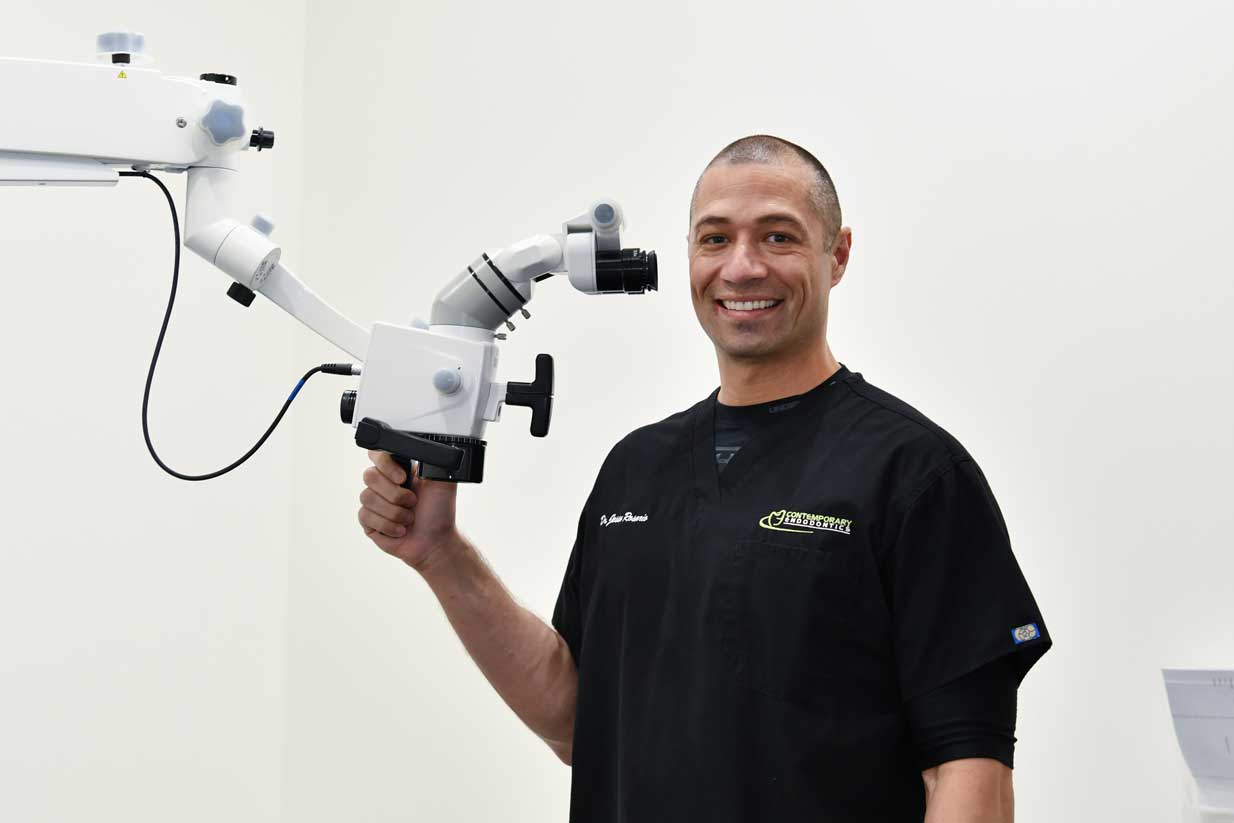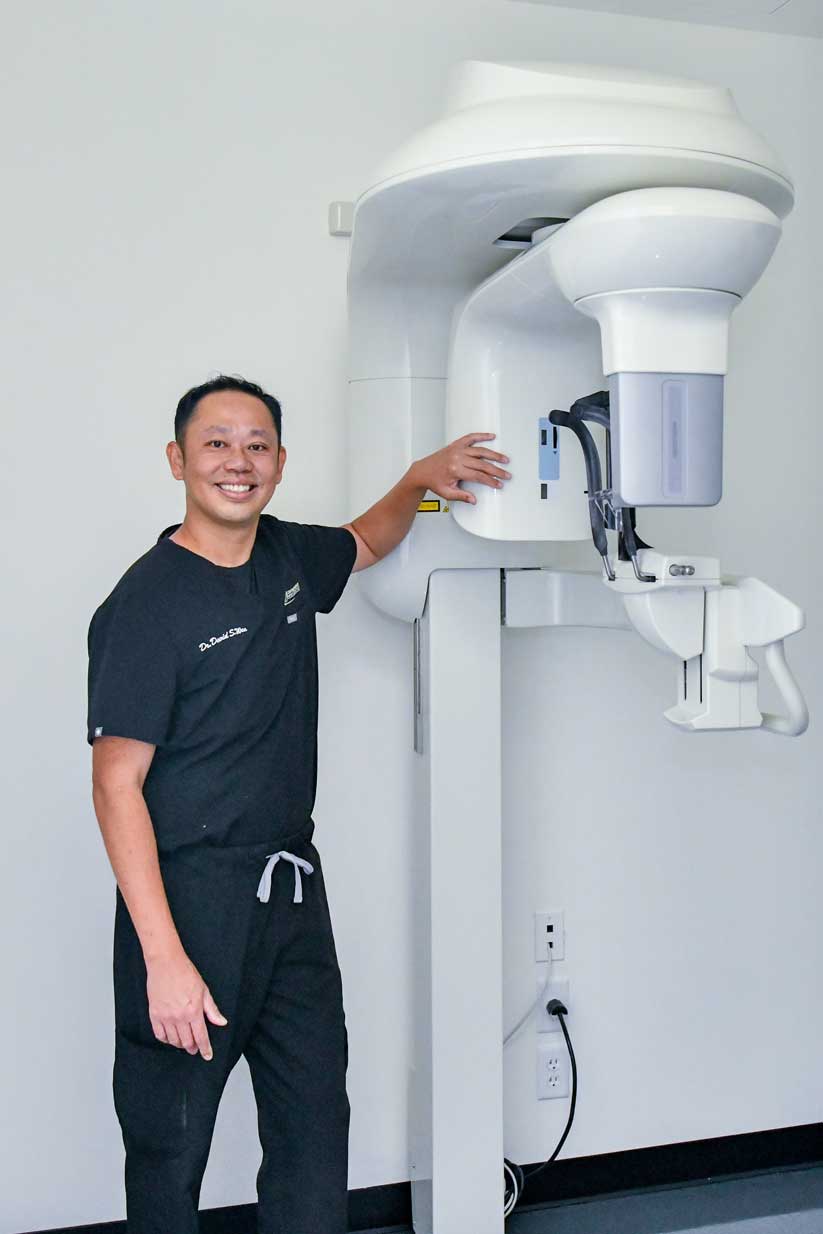How do we use the Latest Technology?
At Contemporary Endodontics, our Team of Endodontists take pride in offering our patients the latest in Dental Technology.
Patients and referring doctors can have confidence in the care provided at Contemporary Endodontics. In addition to possessing expertise built on a foundation of specialty training, the endodontists at Contemporary Endodontics are equipped with sophisticated equipment like high-powered microscopes, digital radiographs, and high-definition CBCT to improve diagnostic accuracy and optimize treatment outcomes.
“The more data we have, the greater our chance for successful treatment,” notes Dr. Wan. “New high-resolution cone beam computed tomography (CBCT) technology enables us to evaluate the treatment area in three dimensions and visualize the exact dimensions of the lesion. We have a blueprint going into treatment rather than relying on trial and error. This information guides exactly how much to remove and where to clean, and clearly shows any missed canals. CBCT’s powerful imaging also allows us to help determine if a root is fractured, so we can avoid the cost and frustration of treatment that will ultimately be unsuccessful.”
With the help of this imaging technology, Dr. Wan reports that patients who are referred for re-treatment of an old, failed root canal can expect an 80-85% success rate over 10 years. “We always strive to preserve the natural tooth if possible, and our chances of successfully saving teeth are higher now than ever before,” Dr. Wan notes. Dr. Wan and his team offer apicoectomy as an option for saving teeth, even for posterior teeth which can be extremely challenging to evaluate effectively and treat successfully. He explains, “CBCT imaging prior to treatment allows us to obtain precise measurements of the tooth anatomy. This technology also helps us to make informed decisions about the quantity and quality of bone that will guide treatment and ensure a predictable outcome.” The apicoectomy procedure itself is performed using ultrasonic instruments to clean the root ends under an operating microscope. For patients, the positive experience often serves to reinforce loyalty to the dentist for their role in securing a successful outcome.


Microscopic Endodontics
In addition to digital radiography, we utilize special operating microscopes, also known as Microscopic Endodontics. Magnification and fiber optic illumination are helpful in aiding the doctor to see tiny details inside your tooth. Also, both video and still cameras on the operating microscope can record images of your tooth to further document the procedure and the doctor’s findings. Surgical microscopes are fast becoming the standard of care in the field of Endodontics.

Apex Locators
An electronic apex locator is an electronic device used in endodontics to determine the position of the apical foramen and thus determine the length of the root canal space. The apex of the root has a specific resistance to electrical current, and this is measured using a pair of electrodes typically hooked into the lip and attached to an endodontic file. The electronic principle is relatively simple and is based on electrical resistance; when a circuit is complete (tissue is contacted by the tip of the file), resistance decreases markedly, and current suddenly begins to flow. According to the device, this event is signaled by a beep, a buzz, a flashing light, digital readouts, or a pointer on a dial.
Ultrasonics
Since 1958 the use of ultrasonic technology has played a vital role in preventative, restorative and surgical, dental procedures. It was not until the 1990s until this technology was incorporated in a variety of endodontic applications. Some of these uses include finding and accessing calcified canals, access enhancement, removal of intra-canal obstructions (i.e., posts, separated instruments, pulp stones), irrigation, and most well-known, root end surgical preparations.
What is CBCT Cone Beam Technology
Cone Beam technology is used to create 3D images of your teeth. The dental cone-beam CT (computed tomography) is a type of 3D imaging that is used when regular x-rays are not enough to properly image the patient’s condition.
These 3D images may be necessary if:
- You require endodontic treatment
- You require dental implants
- You require orthodontic treatment
- You have unerupted teeth and require a more complicated treatment plan
What are the benefits of Cone Beam Technology?
- Your endodontist is able to use these 3D images in conjunction with regular dental x-rays, panoramic x-rays, and photos to develop your treatment plan.
- We are able to use these images and manipulate them to get a full picture of any issues in your smile.
- CBCT Cone Beam Technology is generally used for more complex treatment plans. Ask us if you would like to learn more about our dental technologies.

Learn More about our Use of Technology
If you have questions about our use of technology, we invite you to contact our office or request your new patient appointment.
